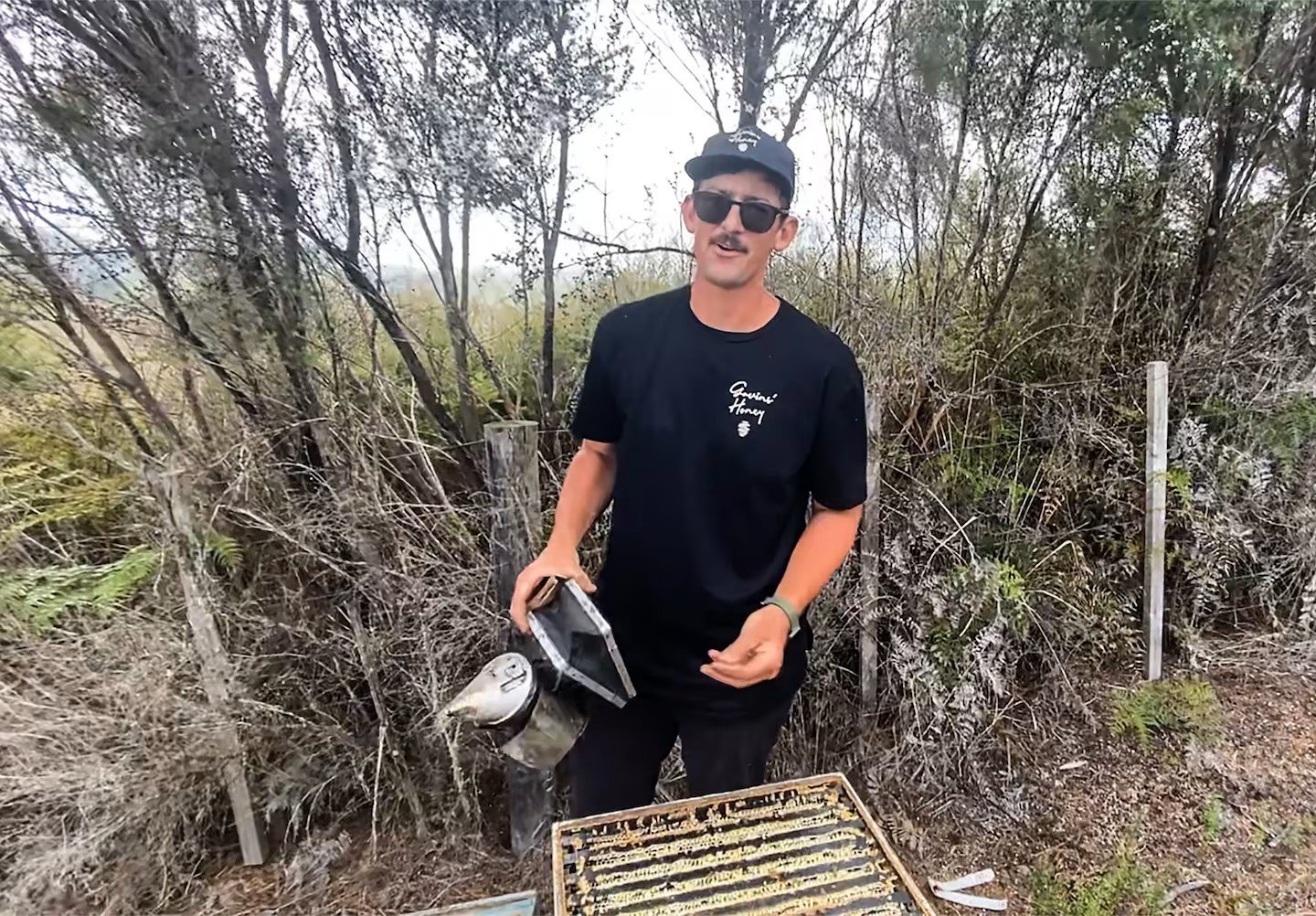Excerpts from NZ Herald article on 22 November 2024. Click here for full article.
High on a Northland hill, editor at large Shayne Currie meets a fourth-generation beekeeper and tastes, literally, the sweet success of a prized New Zealand export.
The bees, thousands of the little blighters, noisily swarm their hives, abuzz in their own maniacal orbits. As I loom closer, one of them uses my bald head as a landing pad. I wonder if it was wise to turn down the offer of a head veil. But fourth-generation beekeeper Liam Gavin exudes confidence – he’s in a T-shirt and over the last few days was working in shorts as well.
“They are not that active today,” he says. “You do get used to it. Some days they are not as happy. When they are busy getting honey, they are not too fussed about us.”
Suddenly one of them becomes very fussed.
It’s making a distinctly different sound. It’s pissed off, and it’s landed on my collar, and then neck. Gavin swoops with his bare hand, grabbing and flicking it away. His Mr Miyagi-like chopsticks move has saved me from a sting.
That the bees are abuzz is a critically important and confidence-boosting sign, high on this Northland hilltop, west of Whangārei. There are similar signs in regions such as Bay of Plenty.
Today, we’re surrounded by hundreds of flowering mānuka trees. All the signs point to a bountiful mānuka honey harvest, if the warm, sunny weather holds up as expected over the next few days, following a mild spring. Under sunny skies, the bees work furiously. There is cautious optimism in the mānuka honey industry.
The mānuka tree only flowers at this time of the year, and only for between three and six weeks. Gavin and his family business, Gavins Apiaries, are entirely focused on this period. Time is of the essence to prepare the hives and to extract as much top-grade mānuka honey as possible.
As Liam Gavin negotiates a steep, uneven and narrow track through the mānuka trees in his 4WD ute, it’s not hard to see why he loves the business.
“You get out in pretty cool places in nature. You’re not sitting in traffic or dealing with all of those sorts of things.”
The origins of the business stretch back to 1912, when Liam’s great-grandfather James John Gavin saddled up his horse in the Mangakahia Valley and followed the river to catch a swarm of bees.
The business has been in the family’s hands, in the same area, for 112 years. Liam’s grandfather left school at 13 to be a beekeeper, and his dad John left school to do the same at 16.
Gavin himself, now 32, spent a handful of years away from home after leaving school but soon returned and now runs the business. He has even started taking his two young children to the hives. A fifth generation in the making, perhaps.
Gavins Apiaries has 1000-1200 hives and typically produces 20-40 tonnes of mānuka honey each season but that can fluctuate wildly. In bad weather seasons, such as Cyclone Gabrielle, it’s next to nothing.
He’s even more positive about mānuka honey’s health benefits.
He estimates he goes through a 1kg jar every three to four weeks – including a spoonful in his coffee.
“I am very big on pushing how good mānuka honey is for you,” he says. “I preach about using it for colds and just using it daily to keep your immunity up against bugs and sicknesses.”
Increasingly, he says, health studies are showing the benefit of it for wounds – applied directly to help heal cuts.
NZ Herald Full Article Here


